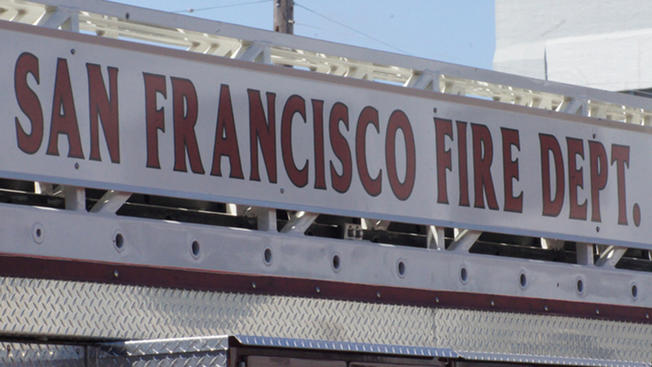The Alameda County Community Food Bank this holiday season is preparing to feed thousands of families still struggling to put food on the table.
But the food bank said it is doing much more with less. The coronavirus emergency food it was receiving from the USDA stopped coming.
"In September and October we had USDA boxes," said Matthew Merzbacher, a food bank volunteer. "They were heavy, they had a gallon of milk (and) usually some frozen meat."
Merzbacher, who is now retired, spends his Wednesday mornings loading up hundreds of strangers' trunks with boxes of food. Strangers like Mark Andresen from San Leandro, who said he can usually put together a one pot stew of whatever the food bank is able to give him.
"I think if I was trying to live off it, I'd go pretty hungry," Andresen said.
The Alameda County Community Food Bank said over the summer the boxes were stuffed with hundreds of pounds of food from the federal coronavirus food assistance program, also known as CFAP.
"We were getting six truckloads a week for this program in July, but starting in November, the program is not available to any food banks in the Bay Area because there aren't any food vendors for us," said Michael Altfest with the Alameda County Community Food Bank.
Local
In the meantime, the food bank is filling the gap by spending millions of their own money on food.
"The only way we're able to do this work is by getting donations," Altfest said. "Right now we can fill the gap, but we need continuous support."
The USDA provided the following statement to NBC Bay Area:
"Through a competitive bidding process, USDA has awarded contracts to 31 companies for deliveries of food boxes which began on Nov. 1 and will run through Dec. 31, 2020. The program will continue the purchase of combination boxes to include fresh produce, dairy products, fluid milk and meat products. In the fourth round, as in the third round, states have been allocated boxes based on the internal need of the state. To estimate the volume of contracts per state we used a 5 year average of The Emergency Food Assistance Program (TEFAP) distribution allocations. In their proposals, vendors were required to identify nonprofits they partnered with to distribute “last mile” but they also have the ability to add nonprofits to ensure delivery of boxes according to their contract.
"Also, beginning in the third round, USDA modified the program to ensure that all areas of the country had access to food boxes. With these modifications, some non-profits that did not receive food boxes previously are receiving them now. Likewise, some that received food boxes previously, may not be receiving them now. However, USDA has made painstaking efforts to ensure comprehensive coverage for the states, with the goal of covering every county in the country. A list of approved contractors that shows the states for which they are contracted to supply is available at www.ams.usda.gov/selling-food-to-usda/farmers-to-families-food-box/approved-contractors-round-four.
"In addition, USDA continues to support families in need by supplying food for The Emergency Food Assistance Program through regular Section 32 purchases and through trade mitigation purchases under the Food Purchase and Distribution Program."



